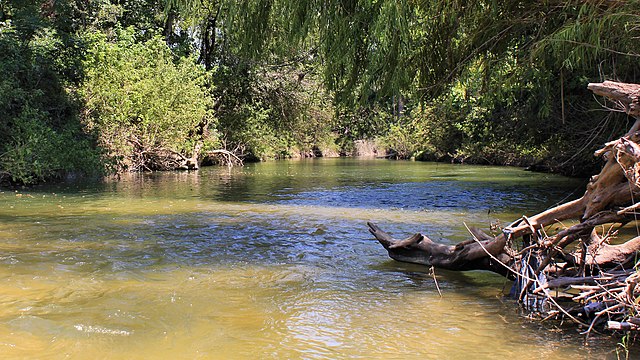
Photo: Onion Creek by Larry D. Moore, CC BY-SA 4.0, Wikimedia
Yesterday the Texas Commission on Environmental Quality (TCEQ) met to take action on a number of items, including possible rulemaking on the outstanding “Pristine Streams” petition submitted by our partner organizations. Unfortunately, the commissioners denied the petition on a 2-1 vote, despite the Sierra Club Lone Star Chapter’s convincing comments as well as our report of about 700 comments supporting the petition from our members.
Commissioners could have either voted to deny the petition or open a rulemaking process that would involve another notice and comment period, this time with concrete rules proposed to protect these 22 remaining pristine streams.
The TCEQ chair, Jon Niermann, acknowledged a problem with nutrient pollution, but he also said that Texas’ current regulatory framework already attempts to address phosphorus pollution through testing and the Surface Water Quality Standards. This could not be further from the truth: Texas, unlike many other states, has not developed numeric criteria for either total phosphorus or total nitrogen under the Surface Water Quality Standards. While existing testing for nutrients like phosphorus or nitrogen is an important component to addressing nutrient pollution, it alone will not solve nutrient pollution or protect Texas’ pristine streams.
TCEQ Commissioner Emily Lindley agreed with Niermann in voting to deny the petition, attempting to position herself on the side of some downstream interests by noting that treated wastewater flows can serve environmental functions in maintaining in-stream flows. That may be true in higher-volume streams, but in these 22 pristine streams, all discharge of treated wastewater causes an overwhelming amount of phosphorus pollution.
Commissioner Bobby Janecka, the lone vote to initiate rulemaking, said that due diligence through a rulemaking process is the only way to fully understand the scope of pristine stream needs (though Janecka also proposed no alternative action aside from meetings with TCEQ staff).
The “studies” mentioned by TCEQ in citing its action on phosphorus and nitrogen have been ongoing for 20 years, and still numeric nutrient criteria have not been adopted at any point in those two decades.
So what’s next?
TCEQ is still under sunset review, and its failure to adopt any numeric nutrient criteria while also failing to protect pristine streams from nutrient pollution could become a big problem for the agency itself. (You can still share your concerns on TCEQ as part of its sunset review. Visit the Public Input Form here.) TCEQ indicated it’s interested in stakeholder outreach on pristine streams, but how that will take shape, if at all, is in flux. Ultimately, it seems that much like HB 4146 in the last session, we’ll likely see legislation again in the coming session aiming to protect what remains of Texas’ pristine streams.